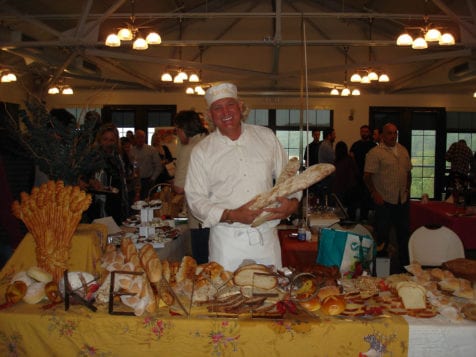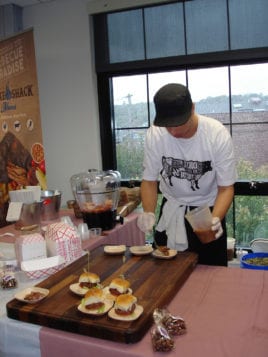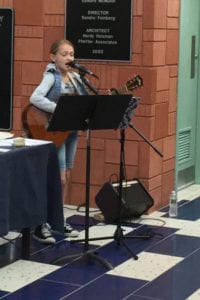By Bill Landon
Senior night was off to a rocky start at Smithtown West, as the Bulls bounced back from a first-set loss to top Sayville 3-1 Oct. 24, 25-16, 25-16, 25-16 and 25-23. At 9-2, the boys’ volleyball team is in third place behind 10-2 Eastport South Manorville and undefeated Sachem North with three games left before the playoffs.

“Our teamwork and our hustle — we [communicated] really well and we played well as a team,” junior outside hitter Kevin Kelleher said. “We’ll keep working and build that family bond and hopefully that will help us in the playoffs.”
Smithtown West head coach Michael Legge said there would be a different mix in the first set, because all five seniors took to the court. The squad pulled within six points late in the set, but couldn’t come back from the deficit.
The second set was a different story, as the Bulls jumped out front 6-2 and rattled off four more straight points before Sayville called timeout.
“This is a deep team — it’s 16 players — not just the six guys you see on the court,” Legge said. “In practice, the [nonstarters are] constantly pushing the starters to play better and better.”
The Golden Flashes broke service and fired back with four unanswered points of their own to trail 10-6, but after the teams traded points, the Bulls notched six more on a service tare to break out to a 16-10 advantage.

Bull’s outside hitter Chris Shanley led his team to break point and finished it with a booming service ace that caught Sayville flat footed, to take the second set 25-16.
“The second set was the turning point,” Shanley said. “We had to push through there to show them what we’re made of. We passed well, we had good service, and our blocking was a little shaky, but we hit the ball well.”
Smithtown West senior Brendan Smith got things going in the third set, stringing five point volleys in a row to lead his team to a 5-0 lead. Sayville struggled, committing several mental errors to which the Bulls cashed in on.
Out front 10-4, the Bulls turned up the heat, outscoring their opponent 9-2 for a commanding 19-6 advantage. But Sayville wouldn’t go down quietly, and battled backed to trail 23-16.
In the first three sets, with a 25-16 margin of victory for each, the fourth and final set proved to be even more of a nail biter.
Sayville peppered the scoreboard with 12 points early in the fourth set as the Bulls managed just three. Although the match made it look like the game would end up going to a fifth set, Smithtown West chipped away at the deficit and scored nine unanswered points as Sayville’s defense began to sputter, committing several unforced errors.

Senior right side blocker Brian Grudman answered with a thundering service ace to put his team out front for the first time in the set, 13-12, and said his team had to just shake it off as the Bulls got their head back in the game.
“Our hustle and our ability to pick ourselves back up — not giving up on any balls [is what led us to the win],” he said. “We’re going to raise the net, show some hustle work our butts off as hard as we can.”
Ahead 17-14 lead, Sayville soon brought the set to a 23-23 tie, which prompted a timeout. Sayville gave Smithtown West break point on a service error, and the Bulls made them pay for it, scoring the final point to put the set away.
“They’ve really bought into the team concept — the court defense, the passing, the hustle that they show,” Legge said. “We push that for every single point every single game, and you don’t say die until the ball hits the floor.”


























